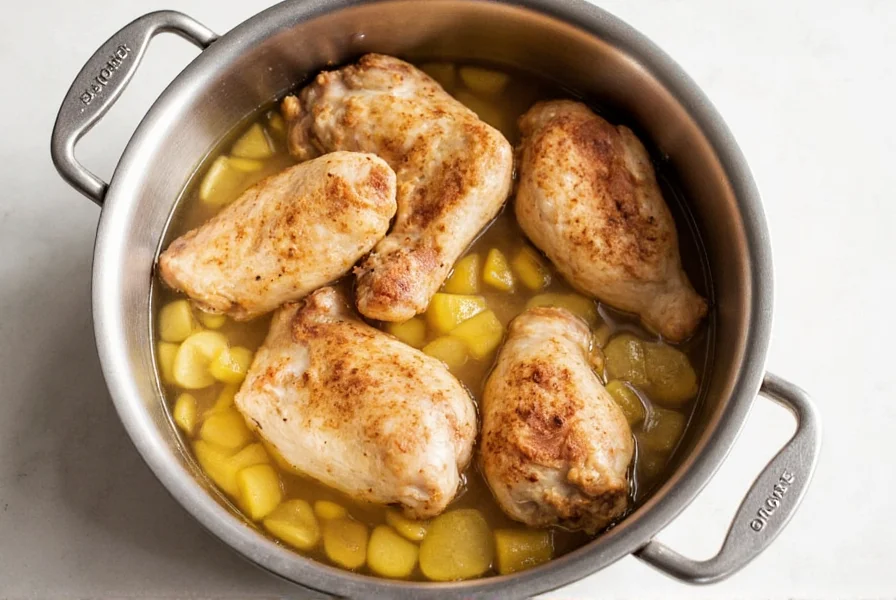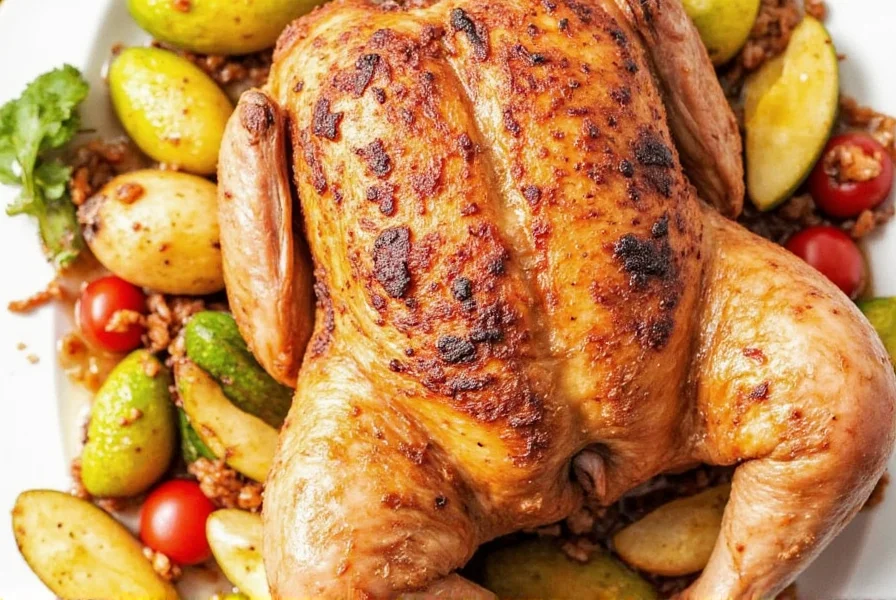Table of Contents
Introduction to Brining Chicken
Brining chicken is a simple process that enhances moisture and flavor. By soaking chicken in a saltwater solution, you can dramatically improve its tenderness and juiciness, especially when grilling or roasting. This guide covers everything you need to know to master brining at home.

Whether you're cooking chicken breasts, thighs, or a whole bird, proper brining prevents dryness and infuses delicious flavor. Let's explore how to do it right.
Why Brine Chicken?
Brining delivers three key benefits for chicken:
- Moisture Retention: The saltwater solution helps chicken absorb extra water, preventing dryness during cooking.
- Flavor Infusion: Herbs, spices, and citrus added to the brine penetrate deep into the meat.
- Tenderness: Salt breaks down muscle proteins, resulting in more tender texture.

How to Brine Chicken: Step-by-Step Guide
Follow these six steps for perfect brined chicken every time:
- Prepare Brine: Combine 1 cup kosher salt and 1 gallon cold water. Add sugar (½ cup) and optional herbs/spices (e.g., rosemary, garlic, citrus).
- Submerge Chicken: Place chicken in a food-safe container or resealable bag. Pour brine over it, ensuring full coverage.
- Refrigerate: Chill for 2-24 hours depending on cut size (breasts: 2-4 hours; whole chicken: 12-24 hours).
- Rinse Thoroughly: Remove chicken from brine and rinse under cold water to remove excess salt.
- Pat Dry: Use paper towels to dry surface completely for better browning during cooking.
- Cook Immediately: Roast, grill, or fry as desired. The chicken will retain moisture and flavor throughout cooking.

5 Must-Know Tips for Perfect Brine Chicken
- Use Kosher Salt: Dissolves evenly and allows precise control over salt concentration.
- Avoid Over-Brining: Exceeding recommended times makes chicken mushy and overly salty.
- Rinse and Dry: Never skip rinsing after brining, and always pat dry before cooking.
- Adjust for Cut Size: Smaller pieces (wings, thighs) need less time than larger cuts.
- Experiment with Flavors: Try apple cider, soy sauce, or honey for unique taste profiles.

Frequently Asked Questions About Brining Chicken
How long should I brine chicken?
Chicken breasts: 2-4 hours. Whole chickens: 12-24 hours. Smaller cuts (thighs, wings): 1-2 hours. Never exceed 48 hours to avoid mushy texture. Always refrigerate during brining.
Can I brine frozen chicken?
No. Always thaw chicken completely in the refrigerator before brining. Frozen chicken absorbs salt unevenly, leading to inconsistent results.
What's the difference between wet and dry brining?
Wet brining uses saltwater solution for deeper moisture retention. Dry brining rubs salt directly on chicken for concentrated flavor and better browning. Both work well, but wet brining is faster for quick meals.
Does brining make chicken salty?
Not when done correctly. Use proper salt ratios (1 cup kosher salt per gallon water), rinse thoroughly after brining, and avoid over-brining. Always taste a small piece before cooking to adjust seasoning.
Can I reuse brine?
No. Raw chicken introduces bacteria into the brine. Always prepare fresh brine for each batch and discard used brine safely.
What's the basic brine ratio?
Standard ratio: 1 cup kosher salt + ½ cup sugar per gallon water. For precise measurements, use 5% salt by weight (50g salt per liter water). Adjust if using table salt (use ¾ cup instead of 1 cup).
Choosing the Right Chicken for Brining
| Feature | Description | Advantages |
|---|---|---|
| Quality | Look for fresh, unblemished chicken with no off odors. | Ensures better flavor and texture after brining. |
| Size | Choose whole chickens or individual cuts based on your needs. | Whole chickens are great for roasting; breasts and thighs work well for grilling or baking. |
| Pre-Brined Status | Check labels for pre-brined chicken (avoid if making your own brine). | Pre-brined options save time but may lack customization for flavor. |
| Source | Purchase from reputable stores or local farms for freshness. | Fresher chicken absorbs brine more effectively and retains moisture better. |
| Organic/Free-Range | Higher quality meat with better natural flavor profile. | Enhances the final taste of brined chicken significantly. |

For best results, avoid pre-brined chicken if making your own brine. Fresh, high-quality chicken from trusted sources ensures optimal moisture retention and flavor absorption.
Conclusion
Brining chicken is a simple technique that transforms ordinary chicken into juicy, flavorful meals. By following these steps and tips, you'll consistently achieve restaurant-quality results at home. Start with basic saltwater brine, then experiment with flavors to find your perfect combination.
















 浙公网安备
33010002000092号
浙公网安备
33010002000092号 浙B2-20120091-4
浙B2-20120091-4